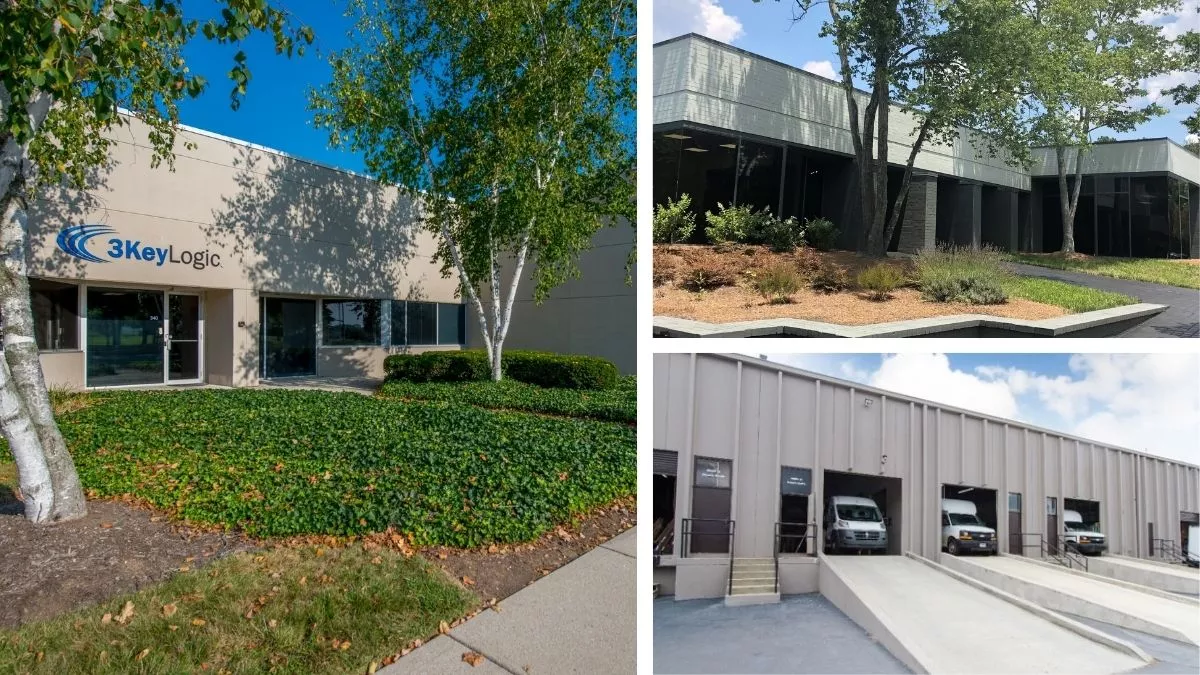When considering investing in real estate, you have many asset classes from which to choose. Multi-family, office and retail are typically the first options that come to mind, as they are all familiar and more visually appealing. However, multi-tenant industrial real estate offers numerous benefits to investors who are looking to diversify their portfolios, generate a steady income stream and mitigate investment risk. Multi-tenant industrial real estate is typically composed of several wide, one-story concrete buildings with roll-up doors and mixed office/warehouse space. These properties have a very diversified tenant base – housing everything from retail fulfillment centers and construction companies to tech startups and bakeries.
Here are ten reasons why multi-tenant industrial real estate should be part of your portfolio:
- Attractive Risk/Return: We will be the first to admit that industrial real estate is not the sexiest type of investment – no soaring glass towers, jazzy store fronts, hip mixed-use of classy apartments. That is exactly the point: we believe that, historically, industrial real estate has exhibited less wide swings in market value to other property types during times of economic weakness.
- Ease of Management: Industrial real estate is primarily leased on a triple net basis where the tenant pays its share of the property operating expenses and most of its interior maintenance costs. Additionally, industrial tenants generally do not require interior janitorial service and industrial properties rarely include common areas that need to be maintained by the landlord.
- Lower Cost of Ownership: Re-tenanting costs for industrial properties tend to be lower than other commercial property types. For instance, based on our experience, the cost of tenant improvements for a new office tenant may range from $15 to $25 per square foot, while, in our experience, tenant improvements for a new industrial tenant typically range from $1.50 to $5.00 per square foot.
- Industrial Real Estate is Flexible: Industrial properties come in a variety of shapes and sizes. They can be a warehouse with some office or space that’s heavy on office with some warehouse for distribution or even warehouse area that can be converted into biotech space or a baking facility. The options for use are virtually limitless. Given proper zoning, industrial real estate allows far greater flexibility in accommodating tenants’ needs than other commercial property types.
- Industrial Real Estate Supply is Shrinking: Avistone believes that we are seeing an urbanization renaissance in the United States. Industrial buildings are being turned into hip nightclubs, chic lofts, apartments and “collaborative space” offices. At the same time, very little new industrial construction is occurring in the urban and suburban areas. As former industrial areas are being rezoned, there is less room for suppliers and distributors to access and store their inventories. From an investor’s supply/demand perspective, this means that industrial has the potential to become more valuable in these areas as businesses prefer to be closer to the cities they supply.
- High Replacement Cost / Barriers to Entry: This brings us to the primary expense driver of new industrial projects: the high cost of acquiring and entitling land. While industrial properties are typically single-story and not necessarily expensive to build, they do require far larger parcels of land as opposed to vertical projects such as office, multi-family and hospitality. Generally speaking, developing new industrial sites does not offer municipalities the same tax revenue opportunities as retail, hospitality, housing or high-rise office. Thus, we believe that the increasing demand for industrial space and the high cost of building new projects potentially places upward pressure on rental rates on existing projects, which may increase opportunities for appreciation in existing properties, especially those acquired below replacement cost.
- Changing Nature of U.S. Employment Market: Today, according to the Small Business Administration, 40% to 50% of all job growth in the country is driven by businesses with fewer than 50 employees, and this trend is expected to increase over the foreseeable future. We believe that many of these businesses will seek to expand space they already occupy in multi-tenant industrial projects and business parks.
- Growth of E-commerce: According to the National Association of Industrial and Office Park Owners (NAIOP), e-commerce (product warehousing for shipping) now drives 30% to 40% of the industrial real estate business. As one of the fastest growing segments of the economy, e-commerce is expected to account for one-third of all retail sales in just 15 years; and shift more and more space from expensive brick and mortar retail stores to industrial properties – primarily warehouses and e-commerce fulfillment centers.
- The Coming Revolution in 3D Printing: Forbes Magazine, The Economist and other leading business publications are calling 3D Printing “The Next Industrial Revolution.” Because most practical applications will extend beyond “home-use,” the explosive growth in industrial robotic manufacturing and assembly will directly impact industrial properties.
- Home Building and Construction: Industrial properties are often home to businesses engaged in the construction industry. As a result, we believe expanded activities in new residential/commercial construction, the oil and gas industry, and renovation of the nation’s aging infrastructure of roads, bridges, and utilities will have a positive impact on industrial properties. Specifically, Avistone, LLC targets industrial projects in regional markets exhibiting these strong economic drivers.
